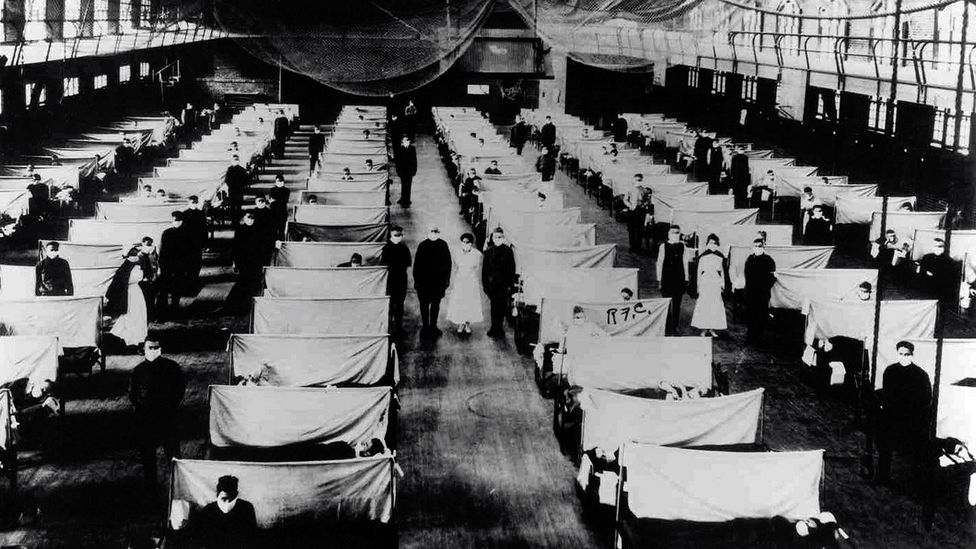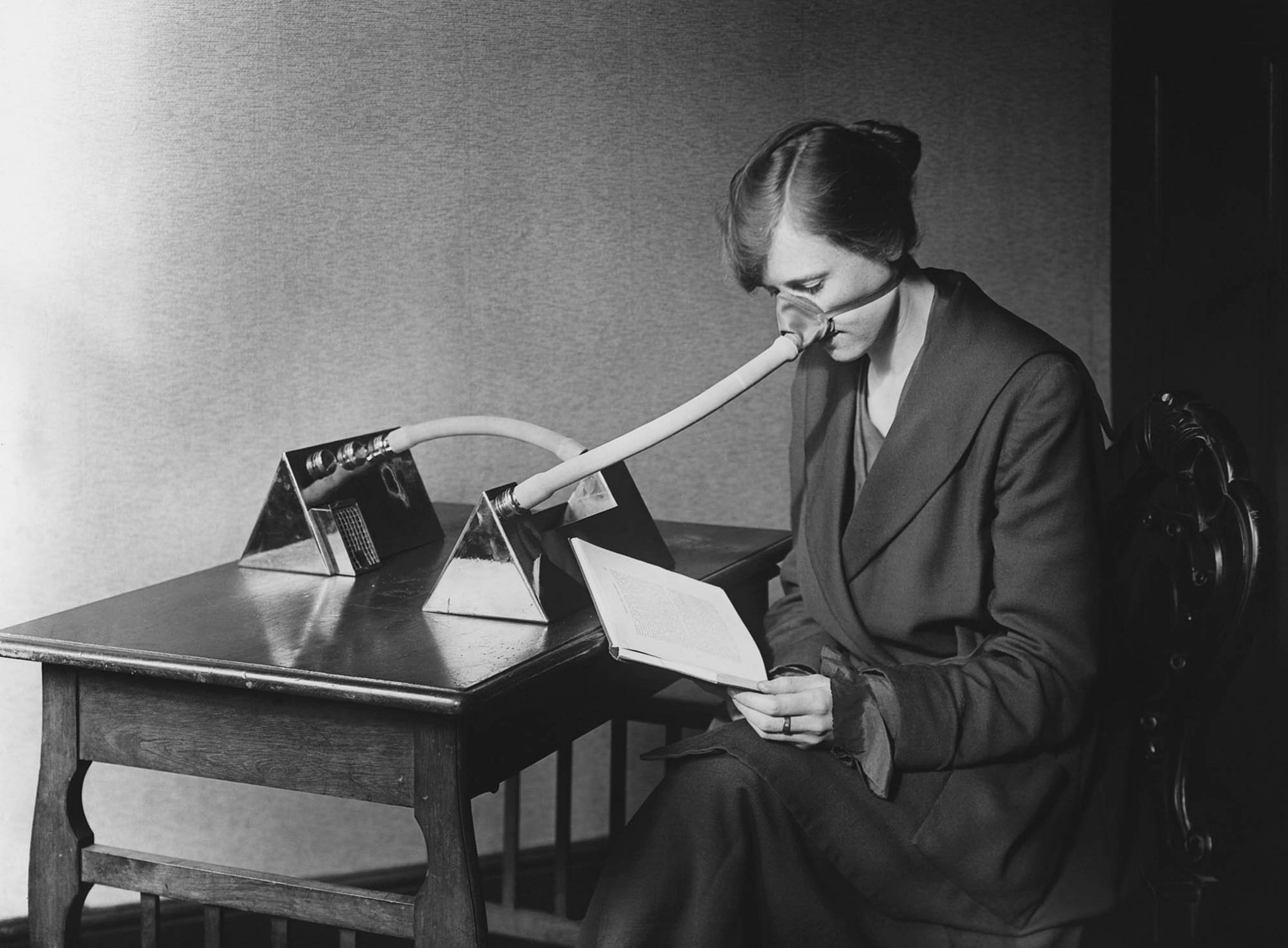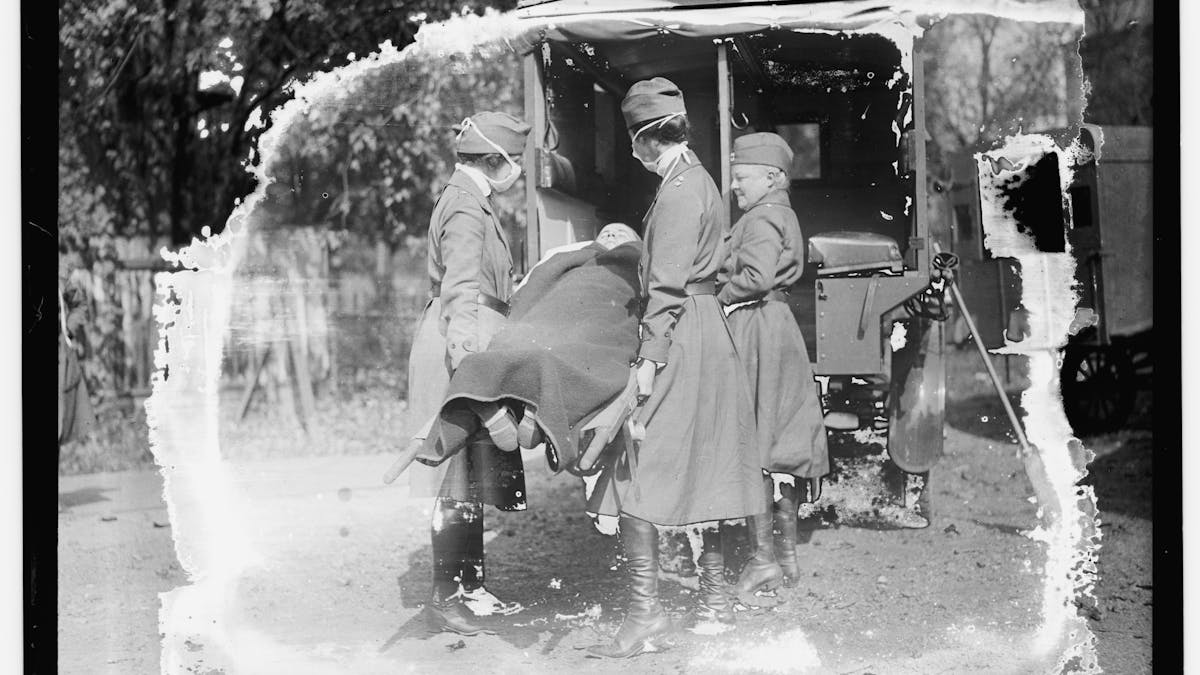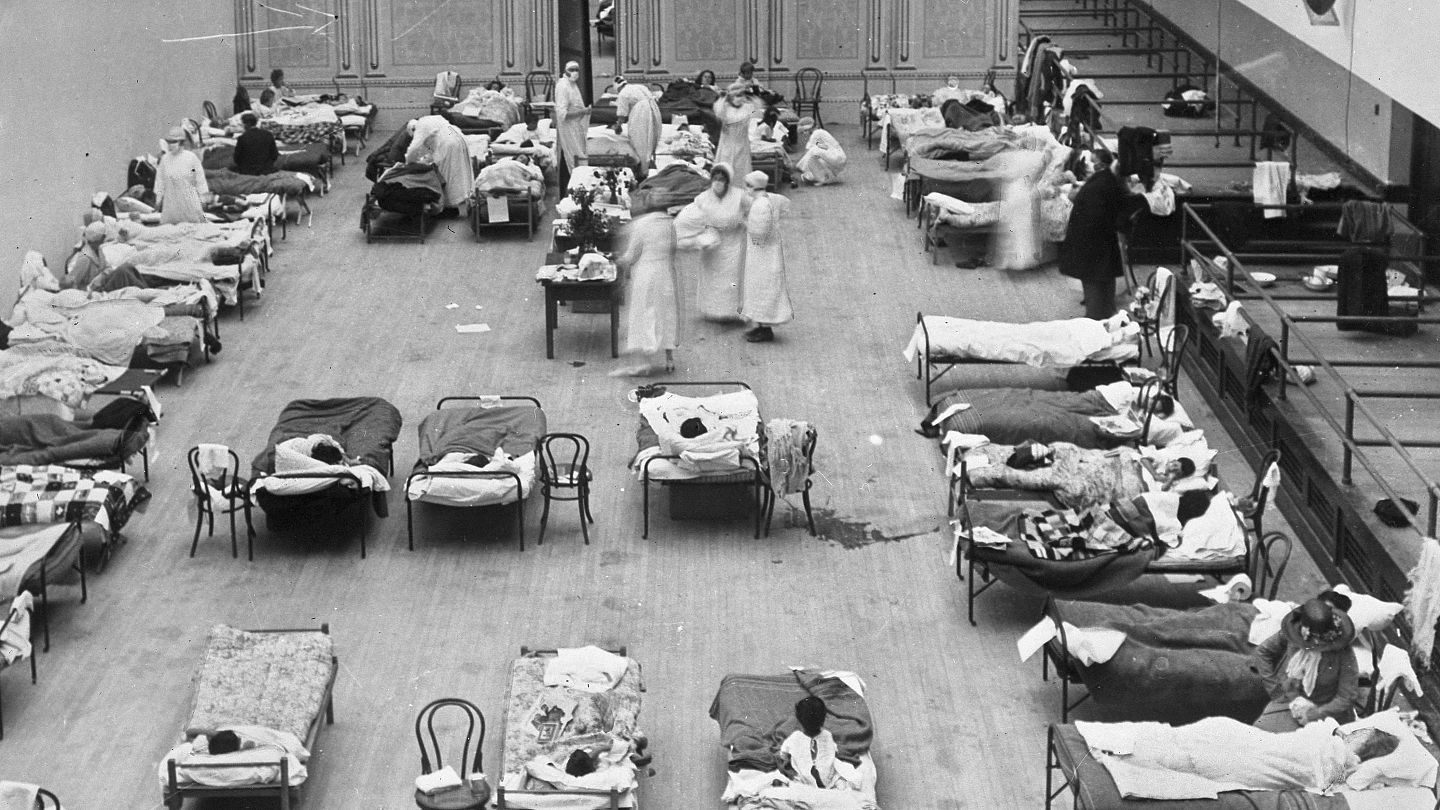But what about the 1918 flu pandemic. Although it remains uncertain where the virus first emerged the earliest cases in the United States were detected in.
How Do Pandemics Usually End And How Will This One Finish Abc News
By the end of the pandemic between 50 and 100 million people were dead worldwide including more than 500000 Americansbut the death rate.

How did the 1918 pandemic end. Some viruses continually mutate in a process called antigenic drift or shift which could enable them to develop into a deadly strain that is immune to human antibodies. The 1918 flu infected around 500 million people in four waves between February 1918 to April 1920 resulting in tens of millions of deaths. It seems safe to say however that some day somehow it will.
In the United States it was first identified in military personnel in spring 1918. The 1918 influenza pandemic was the most severe pandemic in recent history. It first appeared in the spring of 1918 in North America and Europe largely in the trenches of World War I.
In fall of 1918 the United States experiences a severe shortages of professional nurses because of the deployment of large numbers of nurses to military camps in the United States and abroad and the failure to use trained African American nurses. The pandemic occurred in three waves though not simultaneously around the globe. Current scientific understanding is that only a vaccine will put an end to this pandemic but how we get there remains to be seen.
Heres a little history lesson for you all. It was caused by an H1N1 virus with genes of avian origin. A pandemic without a vaccine.
Its the big historical pandemic many have compared COVID-19 to so how did it end in the absence of a vaccine. But how did the pandemic end. But they can also mutate into a less deadly version.
In 1918 right after WWI the Spanish Flu swept through the world causing devastation and taking countless lives. Between 08 164800 and 31 638000 of those infected died from influenza or pneumonia secondary to it. The Black Death in the 13th and 14th centuries ranks No.
In 1918 a novel strand of influenza killed more people than the 14th centurys Black Plague. Although there is not universal consensus regarding where the virus originated it spread worldwide during 1918-1919. Another factor in the pandemics end was the nature of viruses.
1 in terms of pandemics that wreaked havoc on peoples lives and. During the flu pandemic of 1918 the New York City health commissioner tried to slow the transmission of the flu by ordering businesses to open and. The 1918 flu pandemic virus kills an estimated 195000 Americans during October alone.
Secondary bacterial pneumonia was often the cause of death at that time. The influenza pandemic of 191819 also called the Spanish flu lasted between one and two years. It took two years to curb the illness and in 1920 the recovery began.
The Spanish Flu -- something that started as just regular flu in the US -- spread to the whole of Europe and eventually the world causing catastrophic damage to the lives of millions from 1918 to 1920 The Spanish flu also started as a minor cold but in no time it completely took over and put immense loads on the medical systems in nations In Spain the pandemic came right at the time of harvests. The coming decade brought modernity with. The end of the 1918 pandemic wasnt however just the result of so many people catching it that immunity became widespread.
The influenza pandemic of 191819 resulted from such an occurrence and affected populations throughout the world. The 1918 pandemic struck in three distinct waves over a 12-month period. The end of a pandemic is hard to pinpoint but we can safely say that things started going back to normal by late 1918.
Academics agree that the end of the pandemic occurred in 1920 when society ended up developing a collective immunity to the Spanish flu although the virus never completely disappeared. In the Northern Hemisphere the first wave originated in the spring of 1918 during World War I. Social distancing was also key.
What followed was a. The dead were buried. An influenza virus called influenza type A subtype H1N1 is now known to have been the cause of the extreme mortality of this pandemic which resulted in an estimated 25 million deaths though some researchers have projected that it caused as many as 4050 million deaths.
At least 50 million people died worldwide because of that H1N1 influenza outbreak. During the three waves of the Spanish Influenza pandemic between spring 1918 and spring 1919 about 200 of every 1000 people contracted influenza about 206 million.
 Coronavirus What Can We Learn From The Spanish Flu Bbc Future
Coronavirus What Can We Learn From The Spanish Flu Bbc Future
 Why The Second Wave Of The 1918 Flu Pandemic Was So Deadly History
Why The Second Wave Of The 1918 Flu Pandemic Was So Deadly History
 The 1918 Influenza Pandemic One Hundred Years Of Progress But Where Now The Lancet Respiratory Medicine
The 1918 Influenza Pandemic One Hundred Years Of Progress But Where Now The Lancet Respiratory Medicine
 The World Changed Its Approach To Health After The 1918 Flu Time
The World Changed Its Approach To Health After The 1918 Flu Time
 Coronavirus How They Tried To Curb Spanish Flu Pandemic In 1918 Bbc News
Coronavirus How They Tried To Curb Spanish Flu Pandemic In 1918 Bbc News
 The 1918 Flu Pandemic Why It Matters 100 Years Later Blogs Cdc
The 1918 Flu Pandemic Why It Matters 100 Years Later Blogs Cdc
 1918 Flu Pandemic That Killed 50 Million Originated In China Historians Say
1918 Flu Pandemic That Killed 50 Million Originated In China Historians Say
 Compare The Flu Pandemic Of 1918 And Covid 19 With Caution The Past Is Not A Prediction
Compare The Flu Pandemic Of 1918 And Covid 19 With Caution The Past Is Not A Prediction
 Opinion These Lessons From The 1918 Flu Can Help Us Cope With Today S Coronavirus Pandemic Marketwatch
Opinion These Lessons From The 1918 Flu Can Help Us Cope With Today S Coronavirus Pandemic Marketwatch
/cdn.vox-cdn.com/uploads/chorus_asset/file/19779395/GettyImages_1174299512.jpg) Spanish Flu How It Compares To Covid 19 Coronavirus In Death Rate And Other Factors Vox
Spanish Flu How It Compares To Covid 19 Coronavirus In Death Rate And Other Factors Vox
 How Did The Spanish Flu Pandemic End And What Lessons Can We Learn From A Century Ago Euronews
How Did The Spanish Flu Pandemic End And What Lessons Can We Learn From A Century Ago Euronews
 Why The Second Wave Of The 1918 Flu Pandemic Was So Deadly History
Why The Second Wave Of The 1918 Flu Pandemic Was So Deadly History
 How Did The 1918 Flu Pandemic End Lessons For Covid 19 Time
How Did The 1918 Flu Pandemic End Lessons For Covid 19 Time
 Spanish Influenza Pandemic And Vaccines History Of Vaccines
Spanish Influenza Pandemic And Vaccines History Of Vaccines

No comments:
Post a Comment
Note: Only a member of this blog may post a comment.